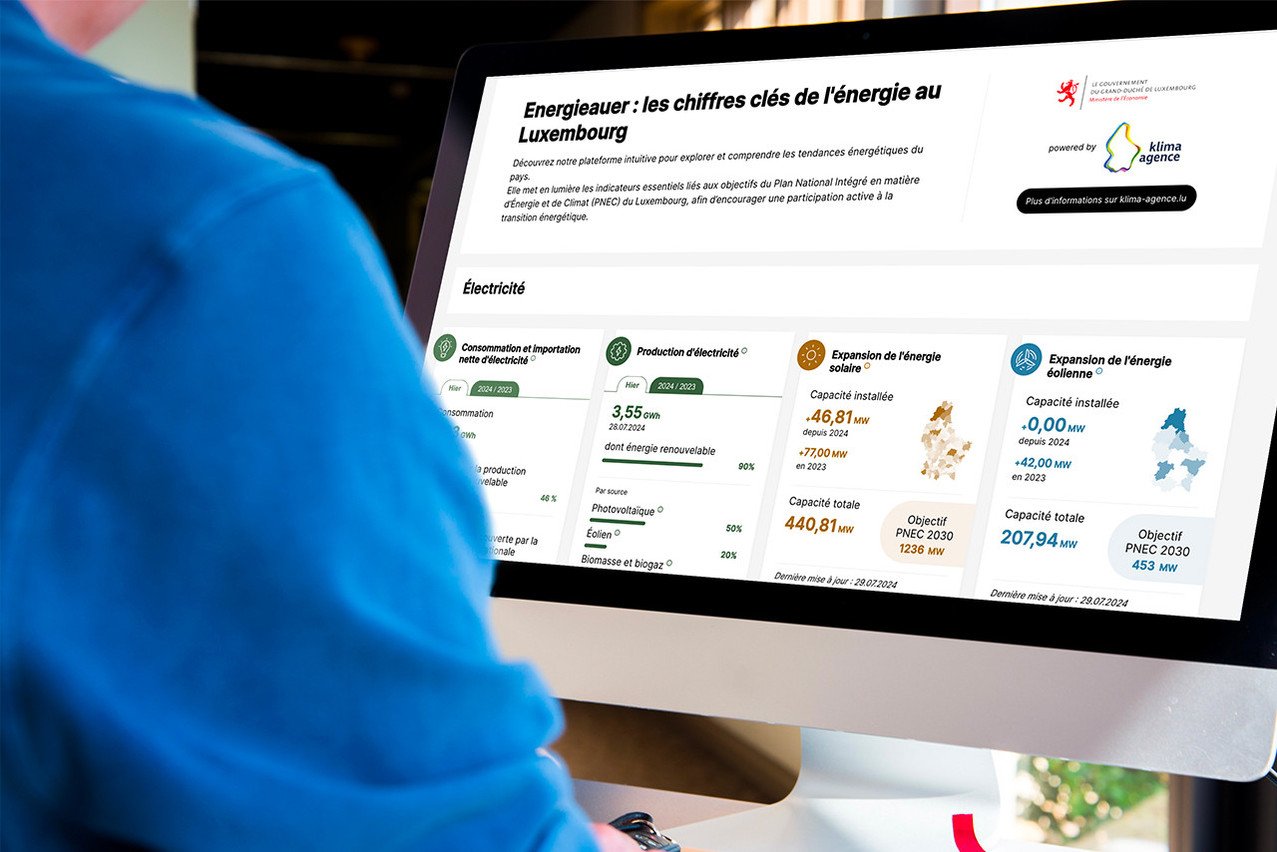Electricity or gas, consumption or production... The new platform unveiled on Monday 29 July by the ministry of the economy details all the data relating to energy in the country. It allows you to “explore and understand Luxembourg’s energy trends through various graphs,” said a .
, highlights key indicators and aims to be a tool for transparency. “The development of renewable energies is a priority for this government. Thanks to the energieauer.lu platform, everyone can monitor the achievement of the high targets set in the National Energy and Climate Plan. This is an important tool that enhances transparency and encourages everyone to take an interest in and contribute to the energy transition,” commented the minister for the economy, (DP).
23% of electricity consumption comes from renewable sources
Electricity consumption since 1 January 2024 stands at 2,783 GWh. The PNEC plans for 37% of electricity consumption to be covered by renewable energy production. In 2023, only 21% of consumption was covered by renewable energy, and in the first half of 2024, 23% of consumption was covered by renewable energy. This is still a long way from the target set. Furthermore, the platform’s data shows that this year, 26.05% of consumption is covered by domestic production, with the remainder being imported from Belgium (16.28%) and Germany (54.72%).
In terms of electricity generation, 87% of production is from renewable sources, mainly wind (278 GWh) and photovoltaic (186 GWh). Production from biomass/biogas or hydroelectricity is lower (105 GWh and 65 GWh). Solar power, the second most important renewable energy source, is expanding, with capacity up by 46.81 MW this year. Total solar energy capacity has thus reached 440.81 MW, but is still a long way from the target of 1,236 MW by 2030, as set out in the PNEC. For wind power, the target looks more achievable. Although there has been no increase in wind power capacity in the country since the start of the year, total capacity now stands at 207.94 MW, against a target of 453 MW.
Further efforts on renewable energies
In order to increase capacity, and thus speed up the deployment of renewable energies, the government plans to “simplify procedures and engage in greater dialogue with the players concerned to identify bottlenecks.” At least, that’s what it announced on 17 July, when it . But other avenues are also being explored, such as a study to allow photovoltaic or wind power installations along motorways--or closer to business parks--“with the obligation to offer the citizens and municipalities affected a stake in the capital.”
When it comes to gas, total consumption since the start of the year stands at 3,686 GWh, but the year is not yet over. By way of comparison, annual consumption in 2023 was 5,522 GWh, exceeding the PNEC’s 2030 target of 4,902 GWh. Biogas is also produced in three of the country’s municipalities: Kehlen, Hesperange and Esch, with a total output of 13.59 GWh.
Although just under ten years remain to achieve the targets set by the PNEC, Luxembourg has already reduced its greenhouse gas emissions, with 6.9m tonnes of CO2 emitted in 2023 compared with 8.1m tonnes of CO2 in 2020. This is one of the changes made to the PNEC in mid-July: greenhouse gas emissions are to be reduced by 55% by 2030 compared with 2005 levels.
This article was originally published in .
